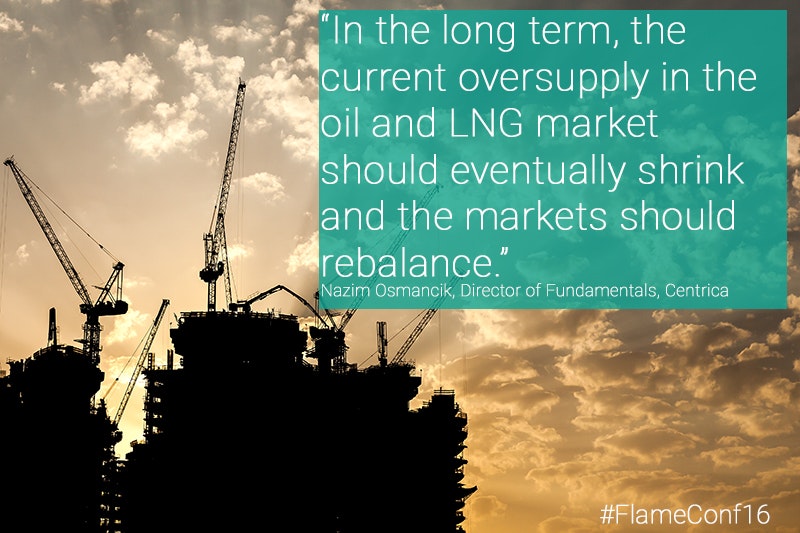Coal: the bigger picture

Competition between coal and gas fired power plants is a key driver of short-term gas demand and wholesale prices, especially in liberalised markets like N.W. Europe and N. America. As the industry braces for a wave of new LNG supply coming over the next few years globally, understanding flexible sources of gas demand such as “coal-gas switching” in the power sectors will be key to assess future gas and LNG price scenarios.
Commodity market landscape and coal prices: recent experience
Global fuel markets experienced a rapid and severe downturn since 2014. A combination of both demand and supply side factors underpinned the trend.
Supply side factors included strong production due to expansive investment decisions taken in the high price world of early 2000s and new sources, notably shale gas and oil in N. America.
Demand side factors included slowing fossil fuel consumption growth, driven by several trends as follows:
- Increasing efficiency, renewable capacity expansion, and anaemic economic growth in the OECD;
- The beginning of a slowing and rebalancing of the Chinese economy away from energy intensive industries;
- Relatively warm winters in the Northern Hemisphere limiting heating demand
- Strong US dollar, discouraging consumption in the Emerging Markets that are net commodity importers
The internationally traded coal market is slightly different from the pack in the sense that it started to experience a gradual price decline a few years earlier, since 2011. This has been consistent with the economic slowdown of China, a key coal consumer, an abundance of global supply, and a strengthening US dollar.
Coal-gas switching: recent experience
As coal prices declined consistently with gas prices, there has not been a notable rise in gas demand via fuel switching. However, the UK and the US have been notable exceptions of late. The UK is benefitting from low gas prices due to moderate residential demand and ample supply. In addition, a carbon tax levied on top of the EU ETS - the UK Carbon Price Floor - has especially been helping the much cleaner gas generation compete with coal.
In the US, an abundance of gas due to the shale revolution is driving very low local gas prices, underpinning the economics of gas generation. In fact the US recently experienced a remarkable CO2 emissions performance compared to other OECD despite lacking international emissions targets and a trading scheme like the EU ETS.
Going forward: Future scenarios and implications
As the world is set for a large growth spurt in global LNG supply, it would be fair to say that coal prices and flexible gas demand via coal-gas switching will play a key role in price formation. However, the interplay between coal and gas will be far from straightforward. While the economics of power generation can be computed, the global fuel-switching capacity is much harder to estimate.
In Europe, large fleets of coal plant will retire over the coming years for regulatory reasons. Only some of this will be replaced by gas as renewables and in some cases new nuclear build will also continue. As coal plants retire, short-term gas demand will be driven proportionately less by coal-gas switching and more by changes in power demand and intermittent renewable generation. In non-liberalised markets, regulatory regime, future policies, and physical constraints will limit the scope of fuel switching.
In the long term, the current oversupply in the oil and LNG market should eventually shrink and the markets should rebalance. Until we get there, the ability of the markets to absorb excess supplies, new sustainable price levels, and demand side shocks like economic recessions will be key uncertainties to look out for. Gas buyers, shippers and sellers will need to consider these uncertainties in making financial and strategic decisions.
During a deep-dive session on coal prices and coal-gas switching as part of Flame 2016, Nazim Osmancik, Director of Fundamentals, Centrica will explore recent trends, future scenarios and implications for the industry and policymakers. Click here for more.